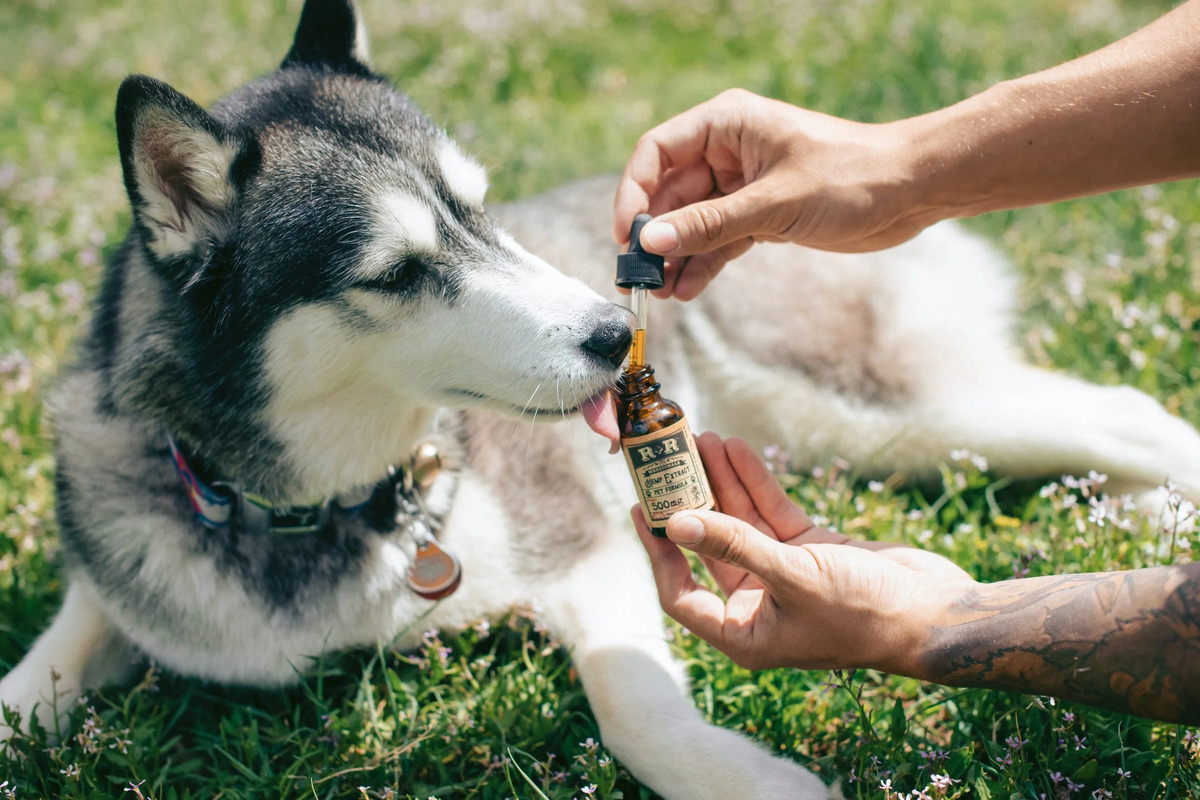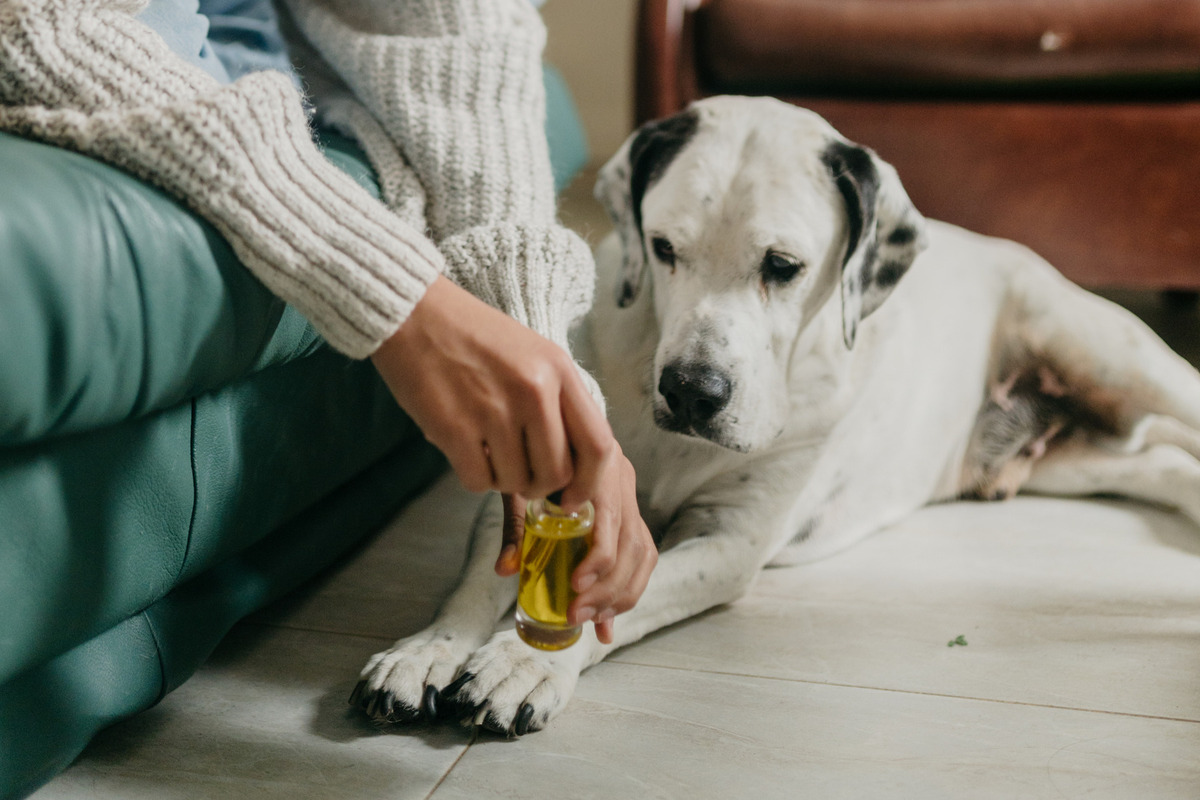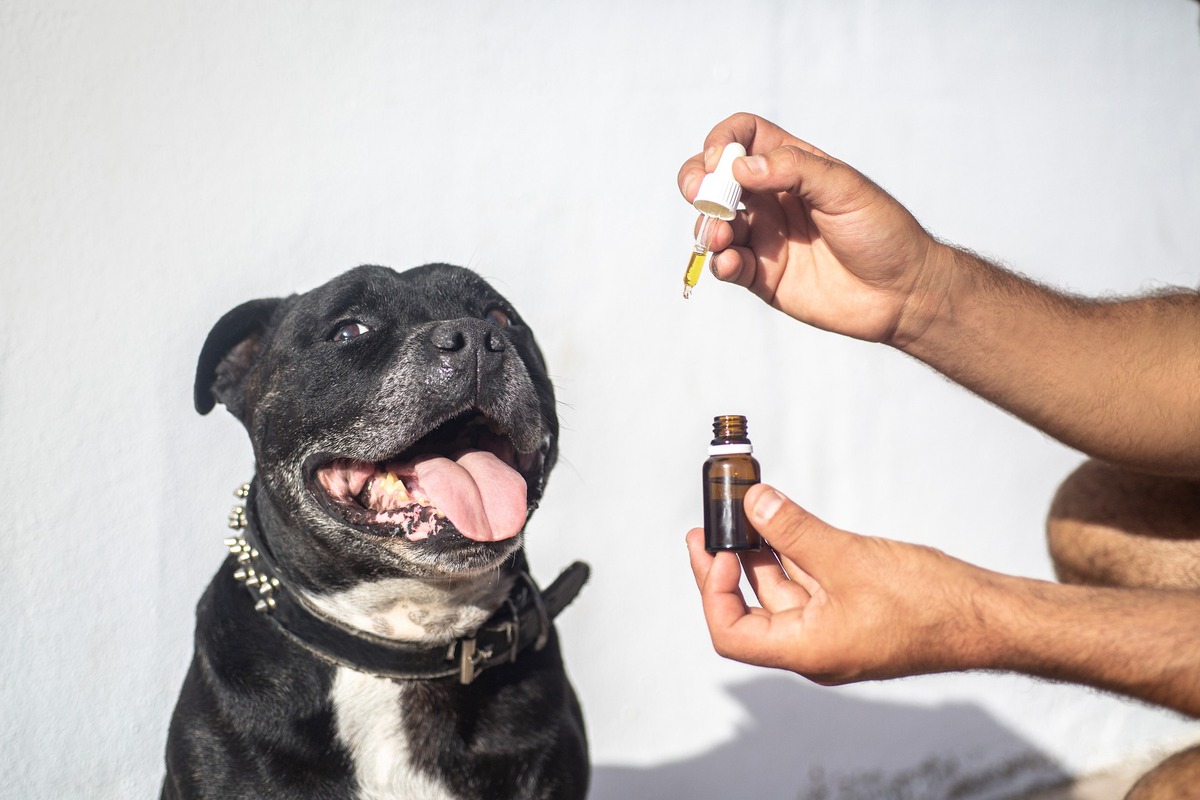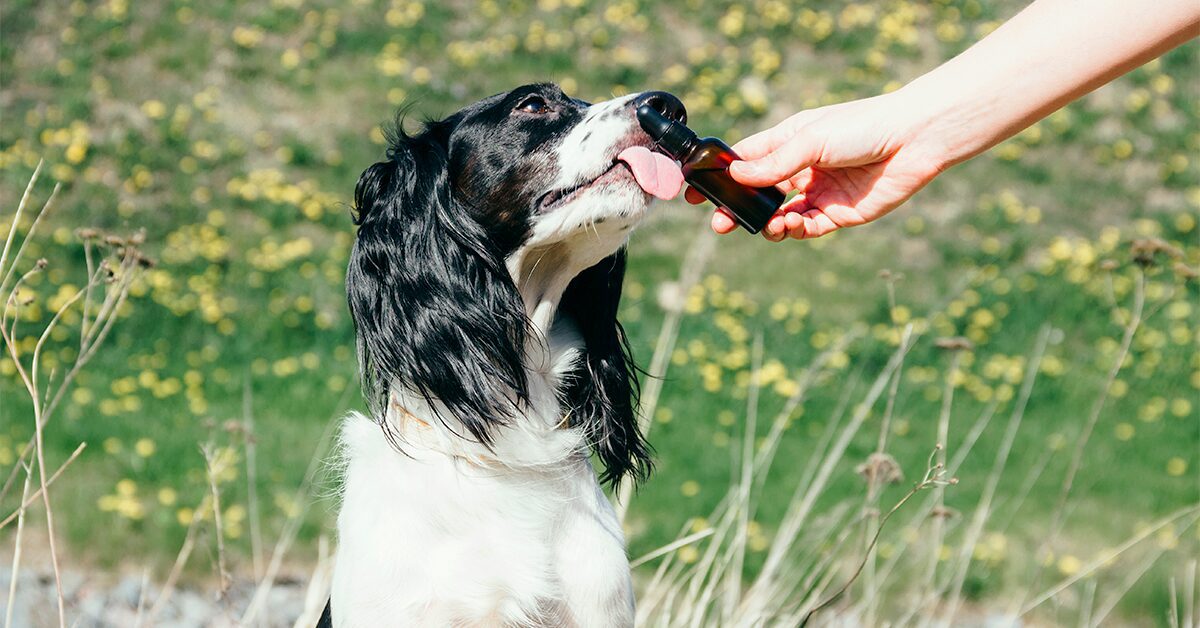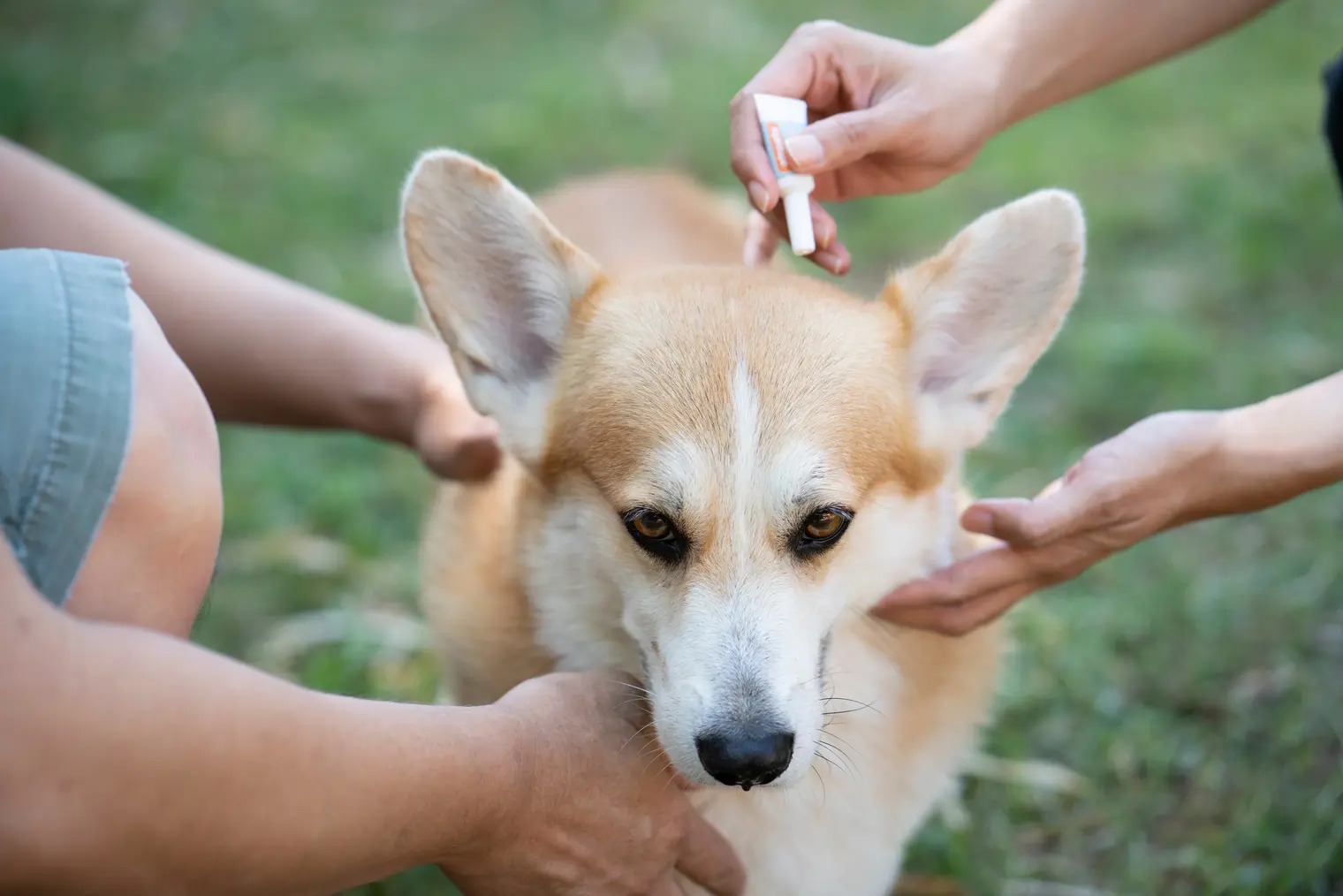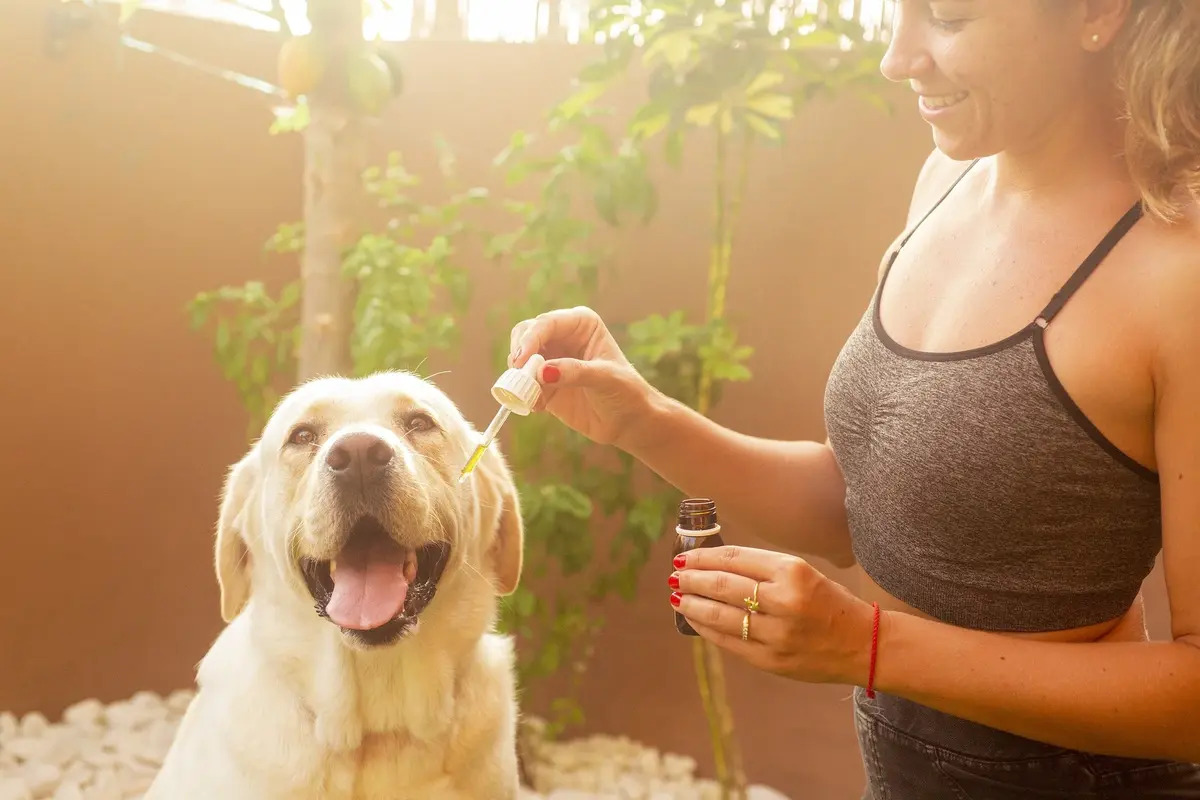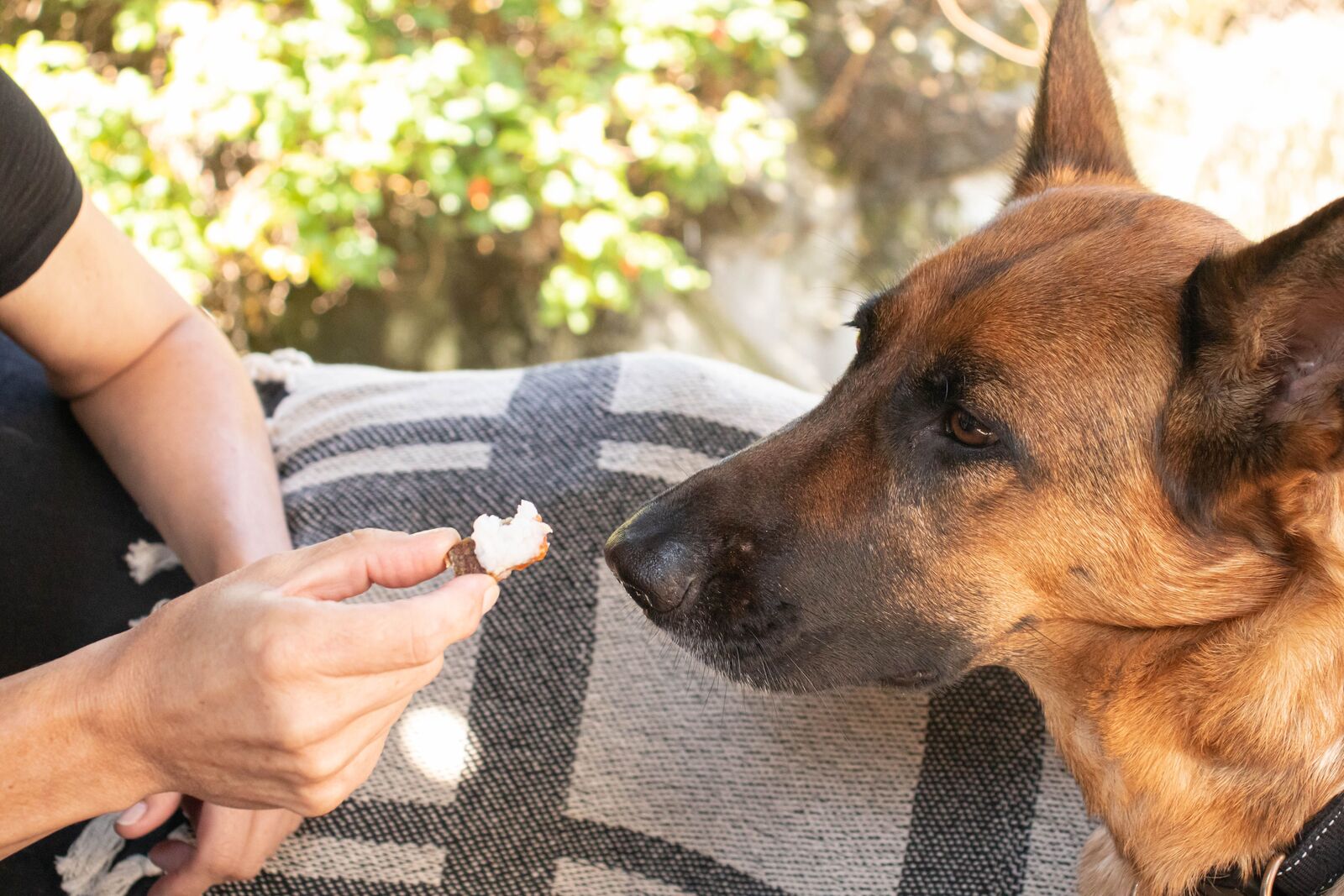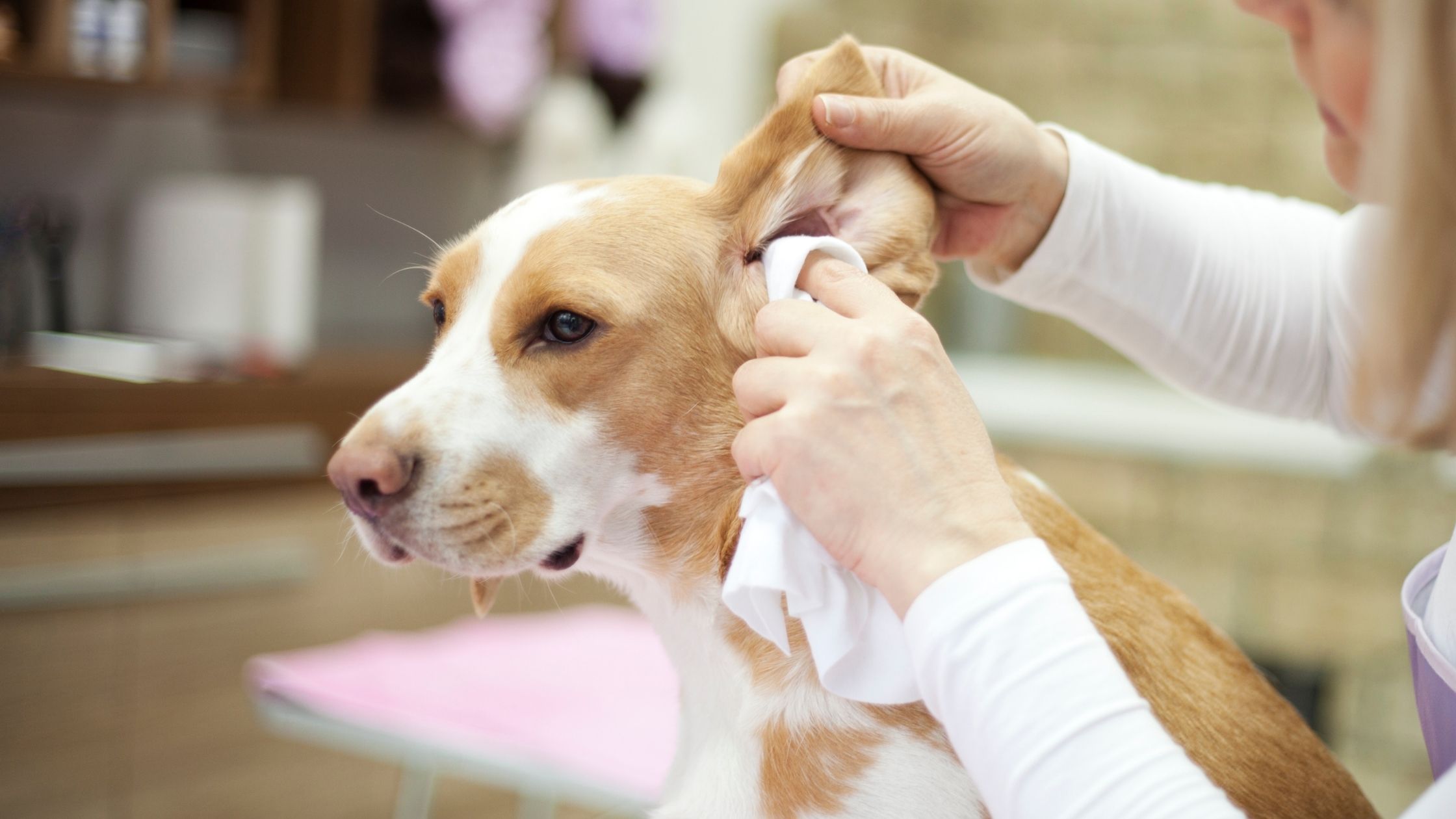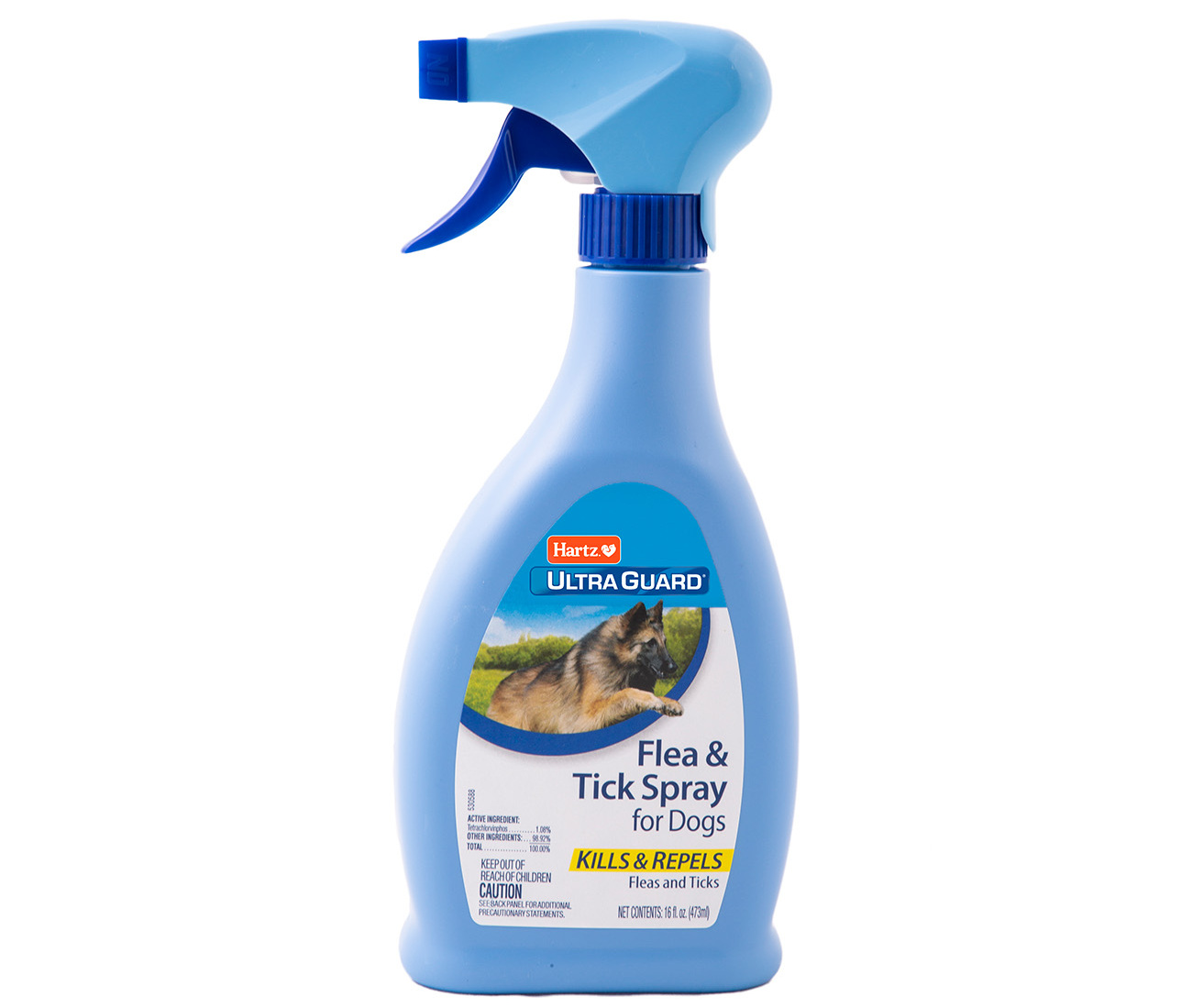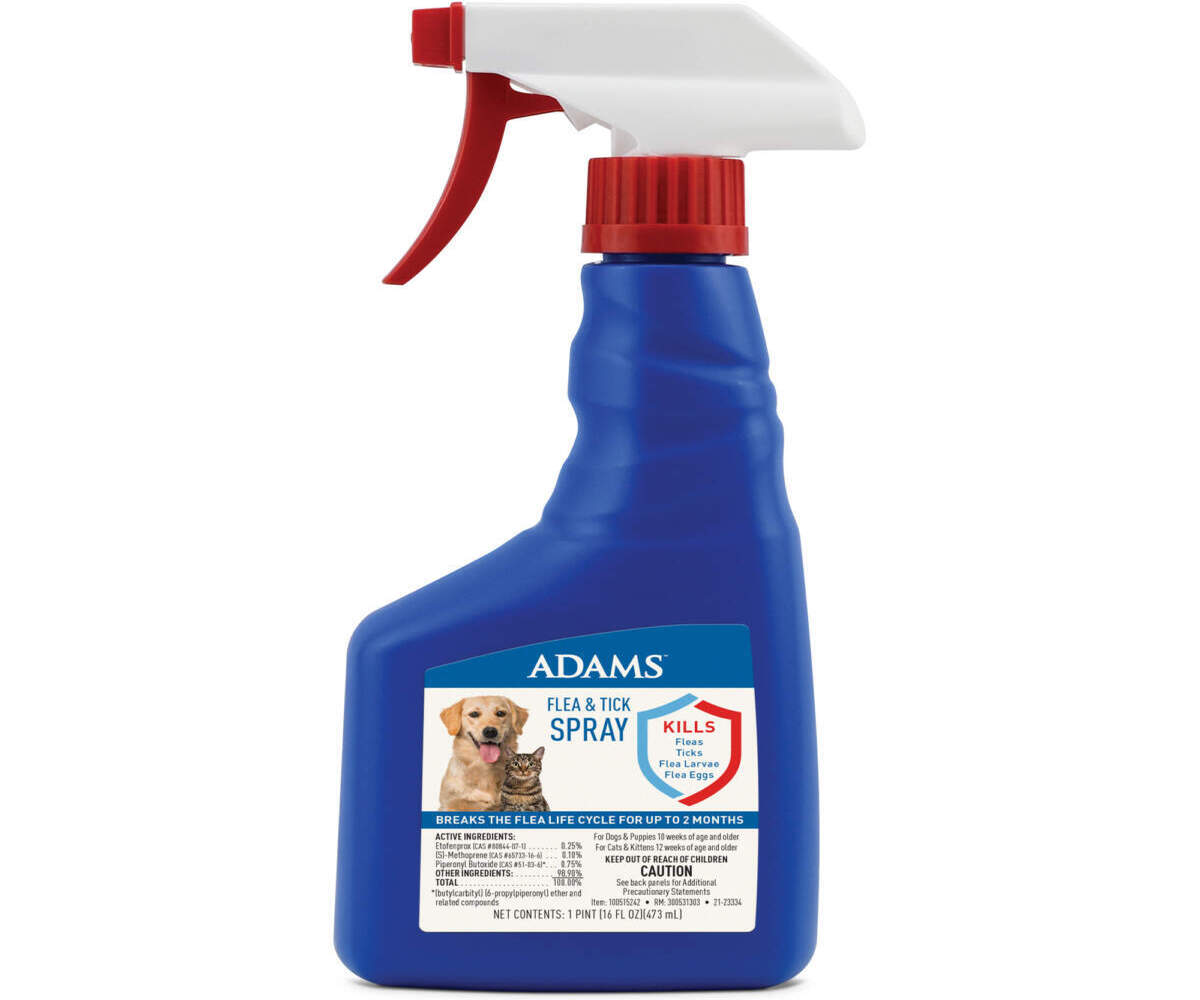Home>Health & Wellness>Common Health Issues>How To Use Tea Tree Oil For Dog Fleas


Common Health Issues
How To Use Tea Tree Oil For Dog Fleas
Published: February 15, 2024
Learn how to use tea tree oil to effectively treat dog fleas and other common health issues. Discover the benefits of tea tree oil for your pet's well-being.
(Many of the links in this article redirect to a specific reviewed product. Your purchase of these products through affiliate links helps to generate commission for Pawsomeoldies.com, at no extra cost. Learn more)
Table of Contents
Introduction
Dealing with fleas on dogs can be a frustrating and challenging experience for pet owners. These tiny parasites not only cause discomfort for our furry friends but can also infest our homes if left unchecked. While there are numerous products available to combat fleas, many pet owners are turning to natural remedies to address this issue. One such remedy that has gained popularity is tea tree oil.
Tea tree oil, derived from the leaves of the Melaleuca alternifolia plant, is renowned for its potent antiseptic and anti-inflammatory properties. It has been used for centuries in traditional medicine to treat various skin conditions and infections. When it comes to combating dog fleas, tea tree oil is considered a natural alternative to chemical-based flea treatments.
In this article, we will delve into the benefits of using tea tree oil for dog fleas, as well as the precautions and risks associated with its use. Additionally, we will provide a comprehensive guide on how to effectively use tea tree oil to combat fleas on your beloved canine companion. By the end of this article, you will have a thorough understanding of the potential benefits and risks of using tea tree oil for dog fleas, empowering you to make informed decisions regarding your pet's well-being.
Understanding Dog Fleas
Dog fleas, scientifically known as Ctenocephalides canis, are small, wingless insects that thrive on the blood of their hosts. These pesky parasites not only cause immense discomfort for dogs but can also lead to a range of health issues if left untreated. Understanding the life cycle and behavior of dog fleas is crucial in effectively combating infestations.
Life Cycle of Dog Fleas
The life cycle of a flea consists of four stages: egg, larva, pupa, and adult. Female fleas lay eggs on the host animal, which then fall off into the surrounding environment, such as bedding, carpets, and outdoor areas frequented by the host. These eggs hatch into larvae, which feed on organic debris and flea feces in the environment. The larvae then spin cocoons and enter the pupal stage, where they develop into adult fleas. The entire life cycle can take as little as two weeks, or as long as several months, depending on environmental conditions.
Behavior and Impact on Dogs
Fleas are adept at jumping onto hosts, allowing them to quickly infest an animal. Once on the host, fleas feed on blood and can cause intense itching, skin irritation, and allergic reactions in dogs. Prolonged flea infestations can lead to anemia, especially in young or small dogs. Additionally, fleas can transmit diseases and parasites, such as tapeworms, to dogs, further compromising their health.
Signs of Flea Infestation
Identifying a flea infestation in dogs is essential for prompt intervention. Common signs of flea infestations include excessive scratching, biting, and licking, as well as the presence of flea dirt (black specks) on the dog's skin and coat. Furthermore, visible adult fleas or flea eggs may be observed on the dog's fur or in the environment where the dog spends time.
Understanding the life cycle, behavior, and impact of dog fleas is crucial for pet owners in effectively addressing and preventing infestations. By gaining insight into the habits and characteristics of these parasites, pet owners can take proactive measures to protect their canine companions from the discomfort and health risks associated with flea infestations.
Benefits of Using Tea Tree Oil for Dog Fleas
Tea tree oil offers a range of potential benefits when used to combat dog fleas. Its natural properties make it an appealing alternative to chemical-based flea treatments. Here are the key benefits of using tea tree oil for dog fleas:
-
Natural Flea Repellent: Tea tree oil is known for its natural insect-repelling properties. When applied to a dog's coat, it can act as a deterrent, making the environment less hospitable for fleas. This can help prevent infestations and reduce the likelihood of reinfestation.
-
Antiseptic and Anti-inflammatory Properties: Tea tree oil possesses powerful antiseptic and anti-inflammatory properties, which can aid in soothing irritated skin caused by flea bites. It may help alleviate itching and discomfort, providing relief for dogs suffering from flea-related skin irritation.
-
Potential Antimicrobial Effects: The antimicrobial properties of tea tree oil may help combat secondary skin infections that can arise from flea bites. By preventing bacterial and fungal growth on the skin, tea tree oil can contribute to the overall health and well-being of dogs affected by flea infestations.
-
Environmentally Friendly: Opting for tea tree oil as a flea treatment aligns with environmentally conscious practices. Unlike some chemical-based flea products that may have environmental implications, tea tree oil is derived from natural sources and can be considered a more eco-friendly choice for pet owners.
-
Versatility: In addition to its efficacy against fleas, tea tree oil can also be used for general skin and coat care for dogs. It may help promote healthy skin and coat condition, making it a versatile addition to a pet care regimen.
It's important to note that while tea tree oil offers these potential benefits, its use should be approached with caution. Understanding the proper application and dosage is crucial to ensure the safety and well-being of dogs. Additionally, it's advisable to consult with a veterinarian before using tea tree oil or any natural remedy on pets, especially if the dog has pre-existing skin conditions or sensitivities.
By leveraging the natural properties of tea tree oil, pet owners have the opportunity to address flea infestations while embracing a more natural and holistic approach to pet care. With proper knowledge and guidance, tea tree oil can be a valuable tool in the ongoing effort to maintain the health and comfort of our canine companions.
Precautions and Risks
While tea tree oil can offer potential benefits in combating dog fleas, it is essential to be aware of the precautions and risks associated with its use. Pet owners should exercise caution and attentiveness when considering tea tree oil as a flea treatment for their dogs.
Potential Risks
Toxicity Concerns:
One of the primary risks associated with tea tree oil is its potential for toxicity, especially when used inappropriately. Tea tree oil contains compounds called terpenes, which can be toxic to dogs if ingested or applied in high concentrations. Ingestion of tea tree oil can lead to symptoms such as vomiting, diarrhea, weakness, and in severe cases, central nervous system depression. Therefore, it is crucial to prevent dogs from ingesting tea tree oil and to use it in diluted form when applied topically.
Skin Sensitivities:
Some dogs may be sensitive to tea tree oil when applied to the skin. This sensitivity can manifest as allergic reactions, including redness, itching, and skin irritation. It is important to perform a patch test before applying tea tree oil to a larger area of the dog's skin to assess for any adverse reactions. If any signs of sensitivity or irritation occur, the use of tea tree oil should be discontinued, and a veterinarian should be consulted.
Precautionary Measures
Dilution and Proper Application:
To minimize the risk of adverse effects, tea tree oil should always be diluted before application to a dog's skin. Diluting tea tree oil with a carrier oil, such as coconut oil or olive oil, helps reduce its concentration while retaining its effectiveness. The recommended dilution ratio is typically 0.1-1% tea tree oil to the carrier oil. Additionally, pet owners should ensure that the diluted solution is applied sparingly and evenly to the dog's coat, avoiding sensitive areas such as the eyes, nose, and mouth.
Veterinary Consultation:
Before using tea tree oil or any natural remedy on a dog, it is advisable to seek guidance from a veterinarian. Veterinarians can provide personalized recommendations based on the dog's health status, breed, and any existing skin conditions. They can also offer insights into the safe and appropriate use of tea tree oil, taking into account the individual needs of the dog.
Monitoring for Adverse Reactions:
After applying tea tree oil to a dog's coat, pet owners should closely monitor their pet for any signs of adverse reactions. This includes observing the skin for redness, swelling, or excessive itching. If any concerning symptoms arise, immediate action should be taken to discontinue the use of tea tree oil and seek veterinary assistance.
By being mindful of the potential risks and taking proactive measures to mitigate them, pet owners can harness the benefits of tea tree oil while prioritizing the safety and well-being of their dogs. Understanding the precautions and risks associated with tea tree oil empowers pet owners to make informed decisions and safeguard their furry companions from potential adverse effects.
How to Use Tea Tree Oil for Dog Fleas
When using tea tree oil to combat dog fleas, it is crucial to approach its application with care and precision. The following steps outline the proper and safe use of tea tree oil for dog flea treatment:
-
Dilution: Begin by diluting the tea tree oil with a suitable carrier oil, such as coconut oil or olive oil. The recommended dilution ratio is typically 0.1-1% tea tree oil to the carrier oil. This dilution helps reduce the concentration of the tea tree oil while retaining its effectiveness in repelling fleas and soothing irritated skin.
-
Patch Test: Before applying the diluted tea tree oil to the dog's entire coat, perform a patch test on a small area of the skin. This test helps assess the dog's sensitivity to the diluted solution and allows for the detection of any potential allergic reactions or skin sensitivities.
-
Application: Once the diluted tea tree oil has been tested for any adverse reactions, apply it sparingly and evenly to the dog's coat. Gently massage the oil into the fur, focusing on areas where fleas are commonly found, such as the neck, back, and base of the tail. Avoid applying the oil near the dog's eyes, nose, and mouth to prevent irritation.
-
Environmental Treatment: In addition to treating the dog, it is essential to address the flea infestation in the dog's environment. Wash the dog's bedding, blankets, and any areas where the dog spends time to eliminate flea eggs and larvae. Consider using a diluted tea tree oil solution to clean and disinfect these areas, taking care to ensure that the dog does not come into contact with concentrated tea tree oil during the cleaning process.
-
Regular Monitoring: After applying the diluted tea tree oil, monitor the dog for any signs of adverse reactions or sensitivity. Observe the skin for redness, swelling, or excessive itching. If any concerning symptoms arise, discontinue the use of tea tree oil and seek guidance from a veterinarian.
-
Consultation with a Veterinarian: Prior to using tea tree oil for flea treatment, it is advisable to consult with a veterinarian. Veterinarians can offer personalized recommendations based on the dog's health status and provide guidance on the safe and appropriate use of tea tree oil. They can also address any concerns or questions regarding the application and potential effects of tea tree oil on the dog.
By following these steps and exercising caution throughout the process, pet owners can effectively utilize tea tree oil as a natural remedy for dog fleas while prioritizing the safety and well-being of their canine companions. It is essential to adhere to proper dilution, application, and monitoring practices to ensure a positive and safe experience when using tea tree oil for dog flea treatment.
Conclusion
In conclusion, the use of tea tree oil for combating dog fleas presents a natural and holistic approach to flea treatment. With its potential benefits as a natural flea repellent, antiseptic, and anti-inflammatory agent, tea tree oil offers pet owners an alternative to chemical-based flea products. However, it is crucial to approach the use of tea tree oil with caution and attentiveness due to the potential risks associated with its application.
Understanding the life cycle and behavior of dog fleas is essential for pet owners in effectively addressing and preventing infestations. By gaining insight into the habits and characteristics of these parasites, pet owners can take proactive measures to protect their canine companions from the discomfort and health risks associated with flea infestations.
While tea tree oil offers a range of potential benefits, including its natural insect-repelling properties and antimicrobial effects, pet owners must be mindful of the precautions and risks associated with its use. Toxicity concerns and skin sensitivities are primary considerations when using tea tree oil for dog flea treatment. Dilution, proper application, and veterinary consultation are crucial steps in ensuring the safe and effective use of tea tree oil.
By following the recommended guidelines for dilution, patch testing, application, and environmental treatment, pet owners can harness the benefits of tea tree oil while prioritizing the safety and well-being of their dogs. Additionally, consulting with a veterinarian before using tea tree oil is highly advisable, as veterinarians can provide personalized recommendations and address any concerns related to the application and potential effects of tea tree oil on dogs.
In embracing a natural and holistic approach to pet care, pet owners have the opportunity to explore the potential benefits of tea tree oil while being mindful of the precautions and risks involved. By integrating proper knowledge, caution, and veterinary guidance, pet owners can navigate the use of tea tree oil as a valuable tool in the ongoing effort to maintain the health and comfort of their beloved canine companions.
